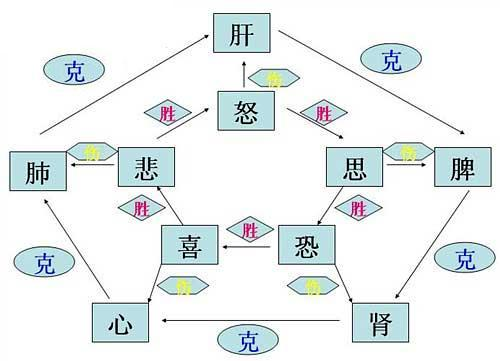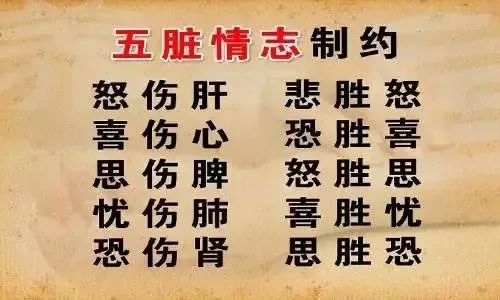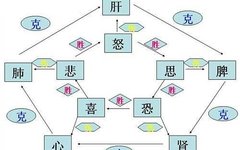
The Seven Emotions and the Five Organs are interconnected, with each emotion having its own characteristics. Next, let us discuss the relationship between the Seven Emotions and the Five Organs. The Huangdi Neijing states: “Humans have five organs that correspond to five emotions: joy, anger, sadness, worry, and fear.” The human body has five organs: the heart (xin), liver (gan), spleen (pi), lungs (fei), and kidneys (shen). Their activities generate five types of qi, leading to five corresponding emotions. In other words, emotions do not arise from nowhere; they have a material basis, which is derived from the essence of the qi of the five organs. The activities of emotions are based on your essence and the flow of qi and blood. In summary, emotions have a material foundation, relying on your organs and the flow of qi and blood.
In clinical practice, we often see patients with irregular menstruation. They experience breast distension and pain before menstruation, and some even have noticeable headaches on both sides. One patient said, “Doctor, my menstruation is particularly bad this month; I feel distended and painful before it comes.” The doctor asked her, “Is your temper good?” She replied, “Not really; I tend to get angry before my period, feeling inexplicably distressed. Even small issues become huge problems that I need to vent. Then, strangely, once my period starts, what I thought was a big deal suddenly seems manageable.”



How does Traditional Chinese Medicine explain this phenomenon?
Traditional Chinese Medicine (TCM) believes that the liver stores blood and regulates menstruation, and it also governs emotions. When qi and blood are stagnant before menstruation, and the flow is obstructed, individuals may feel inexplicably anxious. In TCM, this is referred to as liver qi stagnation. The Huangdi Neijing states, “When liver qi is full, there is anger; when blood is abundant, there is anger.” Qi and blood are the most evident material basis for anger. When you are deficient in qi and blood, such as when you are ill and lack the strength to speak, it is difficult to get angry. Patients who have been bedridden for a long time lack the energy to express anger. This is especially typical for women before menstruation. When the blood is full and needs to be released, similar to the full moon, but there is no outlet and the flow is obstructed, it leads to anger and inexplicable distress. From a TCM perspective, this can be well-regulated using Xiaoyao Wan (Free and Easy Wanderer Pill) or Xiaoyao San (Free and Easy Wanderer Powder) to smooth the flow of qi and blood, allowing menstruation to occur and improving mood. In fact, emotions can be controlled; medications can help, and your spirit can also be managed. Our practice is to master our qi to control our emotions.
The relationship between the Seven Emotions and the Five Organs is described in the Huangdi Neijing: “The liver corresponds to anger, the heart to joy, the spleen to thought, the lungs to worry, and the kidneys to fear.” In addition to these five, sadness and worry both belong to the lungs, while shock and fear belong to the kidneys. Every emotion you experience is connected to your five organs. Each emotion affects your organs.


Editor: Gong Hao
Submitted by: Psychological Counseling Clinic
Reviewed by: Gao Zhiying
Editor-in-Chief: Guo Aiping



Share

Save

Like

View

